Piraeus Lion
Thousand-year-old Viking runes adorn an ancient Greek lion at the entrance to the Venetian Arsenal.
There are many lions in Venice, but one is special. Known as the Piraeus Lion, and standing nine feet tall, it was carved from marble in the 4th century BC and looted from Athens by the Venetian Navy in 1687. But it wasn’t until 19th century that some strange carvings on the sculpture were deciphered. They were runes. A Viking mercenary had scratched a message on the big cat’s shoulders a thousand years ago, and though weathered and faded, it can still be seen today.
The Piraeus Lion was famous in ancient times; it originally guarded the port of Athens. It was stolen as war booty by a famous Venetian naval commander, Francesco Morosini, during the sixth Ottoman-Venetian war. Morosini is famous for two things during his siege of Athens: stealing this sculpture and destroying the Parthenon. The Ottomans, who occupied Athens at the time, used the Parthenon for gunpowder storage. One of Morosini’s cannons scored a direct hit on the cache, instantaneously turning the ancient wonder into a ruin.
On his return to Venice, he was hailed as a hero and made Doge. He set the Piraeus Lion at the entrance to the Arsenale, where it sits today.
While visiting Venice in the late 18th century, Swedish scholar Johann David Åkerblad identified the strange carving on the beast’s shoulders as Viking runes. This Viking scratchitti was probably made by a Varangian mercenary in the 11th century when Athens was a part of the Byzantine Empire.
The runes are carved in what looks like a banner or a ribbon, but is, rather, a cryptozoological lindworm—a headless, serpentine dragon—that bears the inscription. What the inscription actually says has been up for debate since it was identified. A thousand years of wear, vandalism, and weather has turned the markings into a bit of a runic Rorschach. Modern scholars agree that the Viking message is now lost to time.
But the lion serves as a knot in time. It is an object the bears not only this carving, but the complex history it has been through. Ancient Greece, La Serenissima, Viking mercenaries, the Ottomans, and the Byzantine Empire have all left their mark, however invisible, on this special cat.
Know Before You Go
The statue is on the left side of the door at the entrance of the Arsenal of Venice.

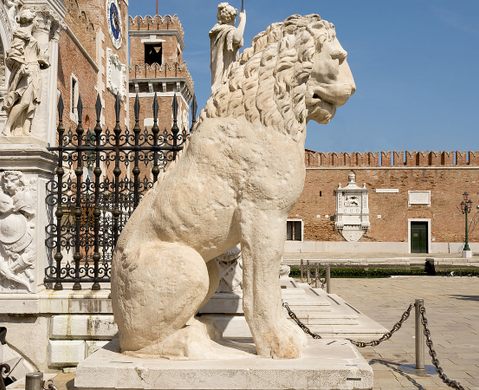





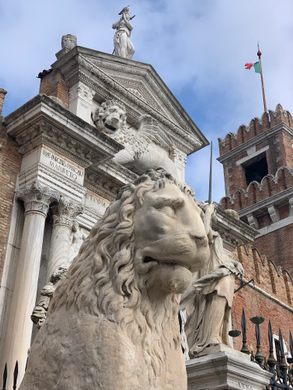








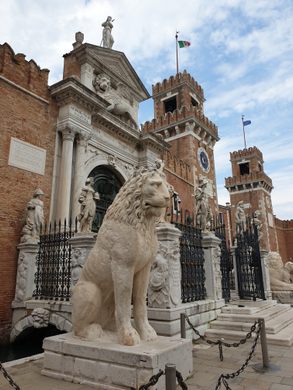












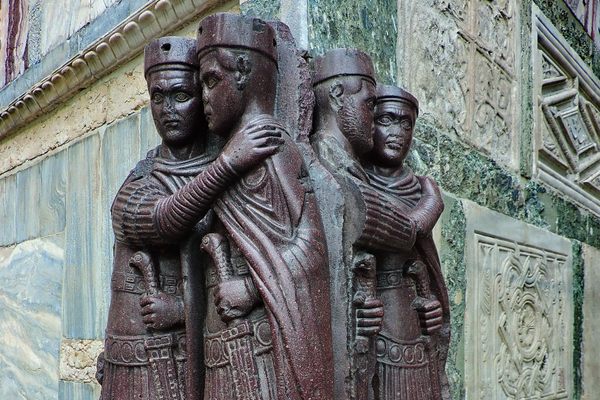

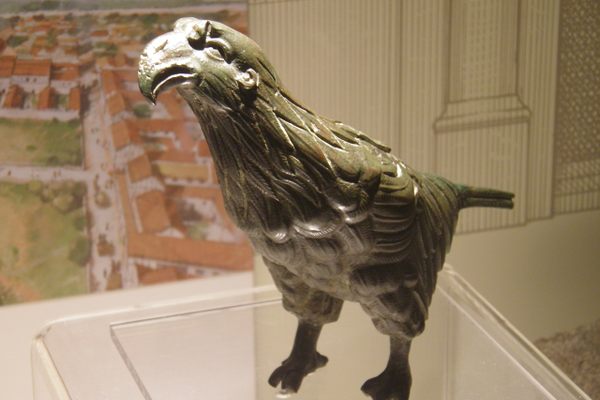

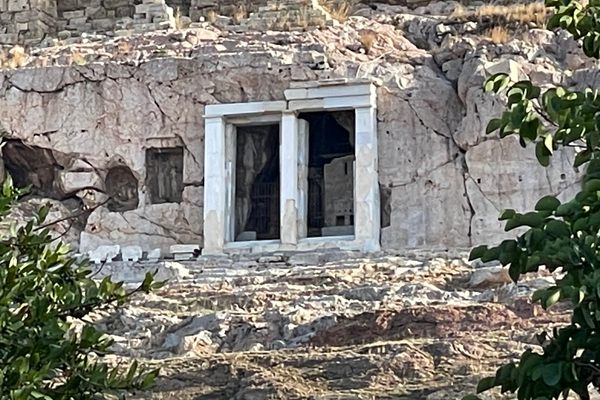

Follow us on Twitter to get the latest on the world's hidden wonders.
Like us on Facebook to get the latest on the world's hidden wonders.
Follow us on Twitter Like us on Facebook